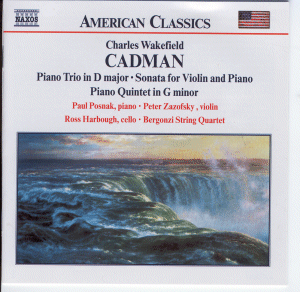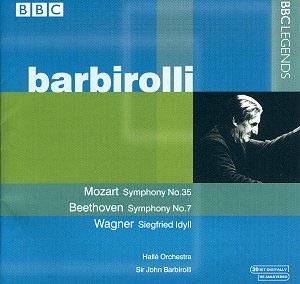 Composer: Charles Wakefield Cadman
Composer: Charles Wakefield Cadman
Works: Piano Trio (1914), Violin Sonata (1930), Piano Quintet (1937), The Legend of the Canyon (1920)
Performers: Paul Posnak (piano), Peter Zazofsky (violin), Ross Harbrough (cello), Bergonzi String Quartet
Recording: 3-6 Jan 2000, Gusman Hall, University of Miami, Coral Gables, Florida
Label: NAXOS
Charles Wakefield Cadman, an enigmatic figure in early 20th-century American music, occupies a unique position at the intersection of romantic lyricism and nascent modernism. Known for his incorporation of Native American themes in works like his opera Shanewis, this Naxos recording presents a broader palette of his output, showcasing compositions that range from the lushly sentimental to the strikingly dissonant. The disc not only highlights Cadman’s melodic gift but also reveals the evolving character of his music across three decades, culminating in pieces that resonate with a distinctly American spirit and a European sensibility.
The Piano Trio (1914) opens with an unfolding lyricism that evokes the French tradition, reminiscent of Franck and Saint-Saëns. The initial Allegro glides forward with a buoyancy that can be likened to an athletic swan, as noted in the review. The performers—Zazofsky, Harbrough, and Posnak—handle the florid textures with a commendable confidence, though some passages reveal occasional awkwardness in ensemble that momentarily disrupts the flow. Nonetheless, the trio captures the essence of Cadman’s style, maintaining a sanguine confidence throughout, with a delightful interplay that invites emotional engagement without tipping into sentimentality.
The Violin Sonata (1930), performed by Zazofsky, is particularly noteworthy for its atmospheric evocation of the Pacific coast. Here, Cadman’s lyrical lines are imbued with a skittery playfulness, a quality that Zazofsky brings to life with a forward-driving intensity. The first movement contrasts Brahms’ weightiness with a lightness of touch, while the second movement unfolds with a raindrop-like delicacy. This nuanced interpretation enhances the work’s inherent drama, culminating in a climactic finale that adheres to traditional conventions yet feels wholly original. Zazofsky’s interpretive choices—especially in the subtle dynamic shifts—bring a fresh perspective to the work, reminiscent of the finest performances of English music from the same era.
Cadman’s Piano Quintet (1937) marks a significant stylistic evolution, showcasing a lighter, more modern texture. The quintet’s first movement presents a striking juxtaposition between lyrical passages and ominous dissonances, reflecting a more complex emotional landscape. The Bergonzi String Quartet complements the piano with an airy transparency, which enhances the work’s dance-like qualities. This performance is notable for its rhythmic precision and clarity, as evidenced in the intricate interplay between strings and piano. Such finesse allows the quintet to breathe while maintaining its dramatic integrity, presenting Cadman not merely as a nostalgic composer but as an innovator willing to explore new emotional territories.
Recording quality is consistently excellent throughout this release. The engineers have captured a vibrant sound palette that allows each instrument’s character to shine, while the acoustics of Gusman Hall provide a warm resonance that envelops the listener. This is particularly effective in the lush textures of the Legend of the Canyon, a work that, while arranged from his earlier song, retains the evocative spirit of Cadman’s engagement with American landscapes.
The collection not only serves to illuminate Cadman’s significant contributions to American classical music but also challenges the listener to re-evaluate his place within the broader narrative of 20th-century music. As the Naxos series continues, one hopes for the inclusion of Cadman’s First Symphony, which promises to further enrich this portrait of an artist whose lyrical gifts and dramatic instincts resonate profoundly within the American musical landscape. This recording is a commendable exploration of Cadman’s oeuvre, revealing a composer whose music is as rewarding as it is underappreciated.



